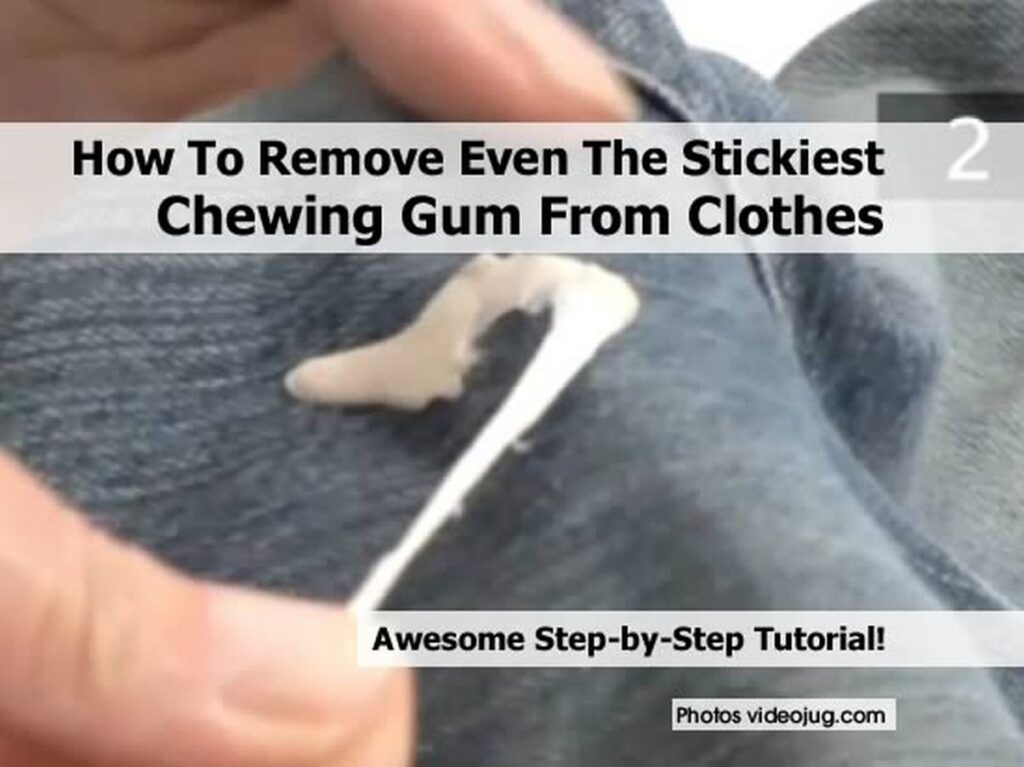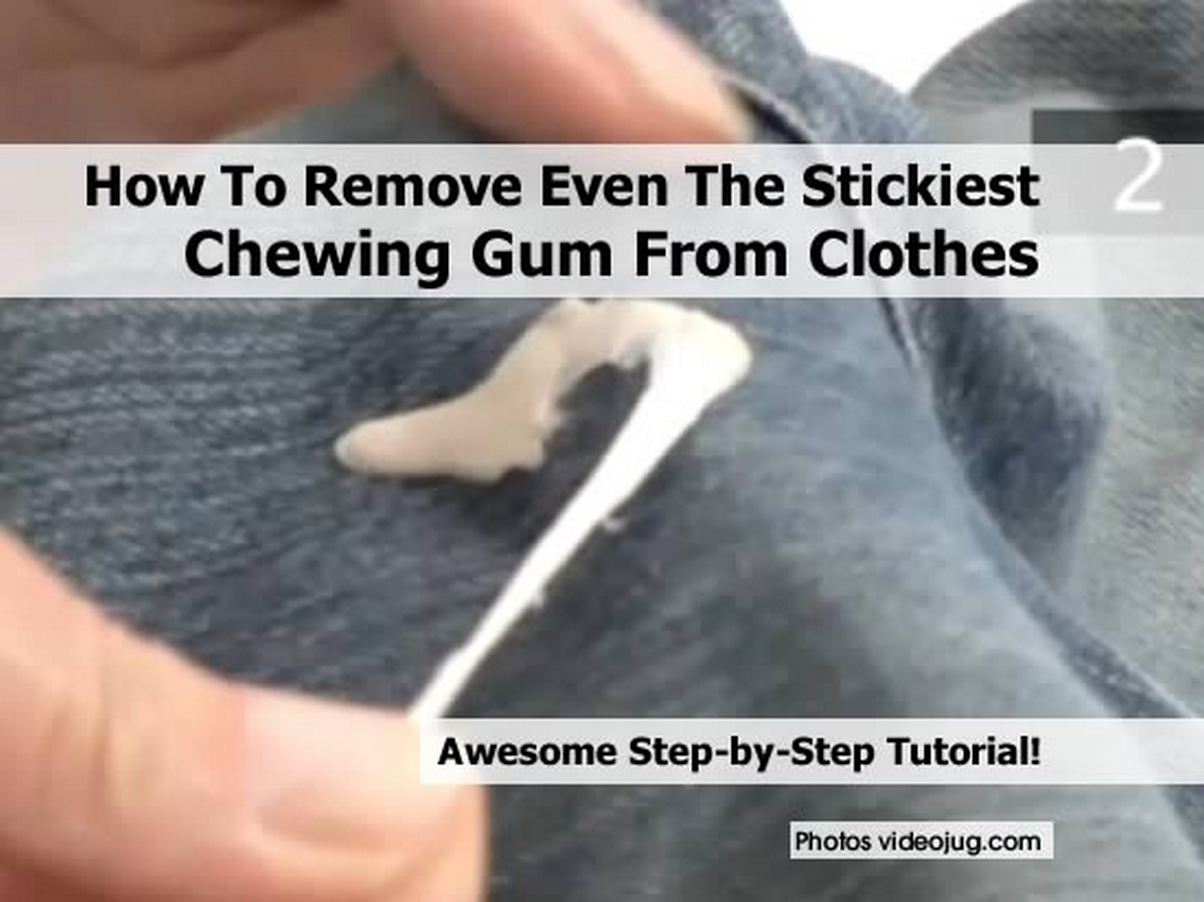
How to Remove Chewing Gum: A Comprehensive Guide
Chewing gum, a seemingly harmless treat, can quickly become a sticky nuisance. Whether it’s stuck on your shoe, embedded in your carpet, or clinging to your favorite piece of clothing, removing chewing gum can be a frustrating task. But don’t despair! This comprehensive guide provides a range of proven methods to effectively remove chewing gum from various surfaces, saving you time, money, and potential damage. From simple household items to specialized solutions, we’ll explore the best approaches to tackle this common problem. Learning how to remove chewing gum efficiently is a valuable skill that can prevent further aggravation and maintain the cleanliness of your belongings.
Understanding the Enemy: Chewing Gum Composition
Before diving into the removal techniques, it’s helpful to understand what makes chewing gum so sticky. Chewing gum primarily consists of a gum base (a blend of elastomers, resins, fats, and emulsifiers), sweeteners, flavorings, and softeners. The gum base is the culprit behind the stickiness, as it’s designed to be insoluble and pliable, allowing for prolonged chewing. This inherent stickiness makes removing chewing gum a challenge, as it readily adheres to surfaces and resists traditional cleaning methods.
Effective Methods for Removing Chewing Gum
Freezing: The Cold Shoulder Approach
Freezing is a highly effective method for removing chewing gum from many surfaces, particularly fabrics and carpets. The cold temperature hardens the gum, making it brittle and easier to break off. Here’s how to do it:
- Ice Cubes: Place ice cubes in a plastic bag and apply it directly to the gum. Hold it there for 15-20 minutes, or until the gum hardens completely.
- Freezer: For items like clothing or small rugs, place the affected item in a plastic bag and put it in the freezer for a few hours.
- Compressed Air: Canned compressed air, often used for cleaning electronics, can also be used to freeze the gum. Spray the gum in short bursts until it hardens.
Once the gum is frozen solid, use a dull knife or scraper to gently pry it off the surface. Be careful not to damage the underlying material.
Heating: Softening the Sticky Situation
Heat can also be used to loosen the gum’s grip, making it easier to remove chewing gum. However, it’s crucial to use heat carefully, as excessive heat can damage certain surfaces. Here are some heating methods:
- Hair Dryer: Use a hair dryer on a low setting to warm the gum. Once it softens, try to peel it off with your fingers or a dull knife.
- Iron: Place a piece of cardboard or brown paper bag over the gum stain on fabric. Iron over the paper on a low setting. The gum should transfer to the paper.
- Hot Water: For smaller items, soaking them in hot water can help soften the gum.
Always test the heat on an inconspicuous area first to ensure it doesn’t damage the material. It’s important to know how to remove chewing gum safely.
Solvents: Breaking Down the Gum
Various solvents can dissolve the gum base, making it easier to remove chewing gum. However, solvents can also be harsh and may damage certain surfaces, so it’s essential to use them with caution and test them in an inconspicuous area first.
- WD-40: Spray WD-40 on the gum and let it sit for a few minutes. Then, wipe away the gum with a cloth.
- Goo Gone: This product is specifically designed to remove sticky substances and can be effective for removing chewing gum.
- Vinegar: Heat white vinegar in a microwave or on the stovetop. Apply the warm vinegar to the gum and let it sit for a few minutes before wiping it away.
- Peanut Butter: The oils in peanut butter can help break down the gum’s stickiness. Apply peanut butter to the gum, let it sit for a few minutes, and then wipe it away.
- Rubbing Alcohol: Soak a cotton ball in rubbing alcohol and apply it to the gum. Let it sit for a few minutes before wiping it away.
After using any solvent, clean the area with soap and water to remove any residue. Remember to always prioritize safety when figuring out how to remove chewing gum. [See also: How to Clean Stubborn Stains]
Specific Surface Solutions
The best method for removing chewing gum often depends on the surface it’s stuck to. Here are some specific solutions for common surfaces:
Removing Chewing Gum from Clothing
Freezing is often the best option for clothing. Place the garment in the freezer or apply ice to the gum. Once hardened, carefully scrape it off. If any residue remains, use a solvent like Goo Gone or rubbing alcohol.
Removing Chewing Gum from Carpet
Freezing, heating, and solvents can all be effective on carpets. Try freezing the gum with ice or compressed air. Alternatively, use a hair dryer to soften the gum and then blot it up with a clean cloth. Solvents like Goo Gone can also be used, but test them in an inconspicuous area first to ensure they don’t damage the carpet.
Removing Chewing Gum from Shoes
Freezing is usually the easiest way to remove chewing gum from shoes. Place the shoe in a plastic bag and freeze it. Once the gum is hard, use a dull knife to pry it off. For rubber soles, you can also try using WD-40 or peanut butter.
Removing Chewing Gum from Hair
Removing chewing gum from hair can be particularly tricky. Peanut butter is often the most effective solution. Apply a generous amount of peanut butter to the gum and surrounding hair. Let it sit for a few minutes, then gently comb the gum out. Vegetable oil or mayonnaise can also work.
Removing Chewing Gum from Concrete
For concrete, a combination of scraping and solvents may be necessary. Use a scraper to remove as much of the gum as possible. Then, apply a solvent like WD-40 or Goo Gone to soften the remaining residue. Scrub the area with a brush and rinse with water.
Prevention is Key
While knowing how to remove chewing gum is helpful, preventing it from sticking in the first place is even better. Dispose of chewing gum properly in trash cans or designated receptacles. Be mindful of where you place your gum after chewing, especially in public areas. Teaching children about proper gum disposal can also help prevent sticky situations.
Professional Help
In some cases, particularly with delicate fabrics or large areas of carpet, it may be best to seek professional help. Professional cleaners have specialized equipment and cleaning solutions that can effectively remove chewing gum without damaging the underlying material. This is especially useful if you are unsure how to remove chewing gum without causing damage.
Conclusion: Mastering the Art of Gum Removal
Removing chewing gum doesn’t have to be a daunting task. By understanding the composition of gum and utilizing the appropriate removal methods, you can effectively tackle this common problem. Whether you choose freezing, heating, solvents, or a combination of techniques, remember to be patient, test solutions in inconspicuous areas, and prioritize safety. With the knowledge and techniques outlined in this guide, you’ll be well-equipped to handle any gum-related sticky situation and keep your belongings clean and gum-free. Now you know exactly how to remove chewing gum!

